Virgin Orbit, Japanese airline team up for air-launch system
Friday, 05 November 2021 13:10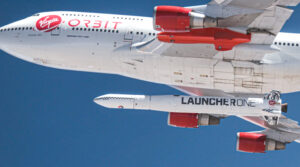
Virgin Orbit has entered an agreement with the owner of Japan's All Nippon Airways for the procurement of 20 flights of Virgin Orbit's LauncherOne rocket from an airport in Japan.
Webb unboxed in cleanroom at Europe’s Spaceport
Friday, 05 November 2021 13:00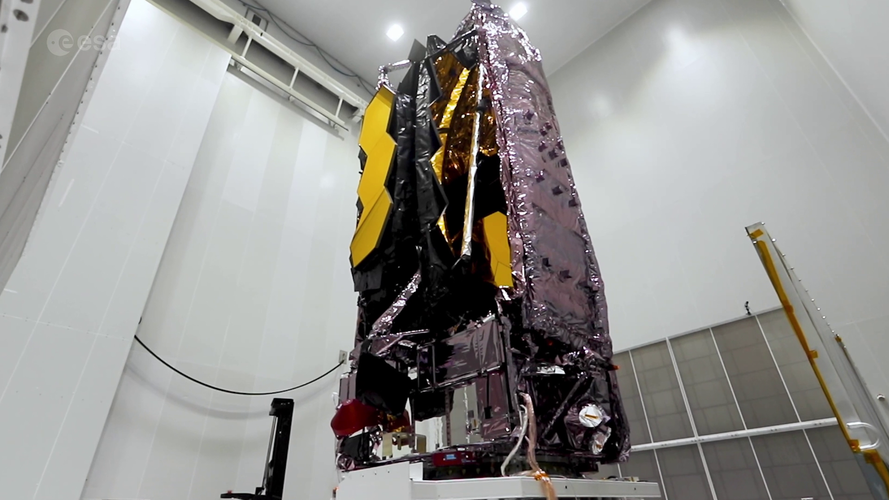 Video:
00:01:19
Video:
00:01:19
After its arrival at Pariacabo harbour in French Guiana on 12 October 2021, the James Webb Space Telescope was transported to Europe’s Spaceport and unboxed in the cleanroom. It is now being prepared for its launch on an Ariane 5 rocket in December.
Though the telescope weighs only six tonnes, it is more than 10.5 m high and almost 4.5 m wide when folded. It was shipped in its folded position in a 30 m long container which, with auxiliary equipment, weighed more than 70 tonnes.
After arriving in the harbour, the telescope inside its container
New great observatories, including Lynx, recommended as a national priority by decadal survey
Friday, 05 November 2021 12:59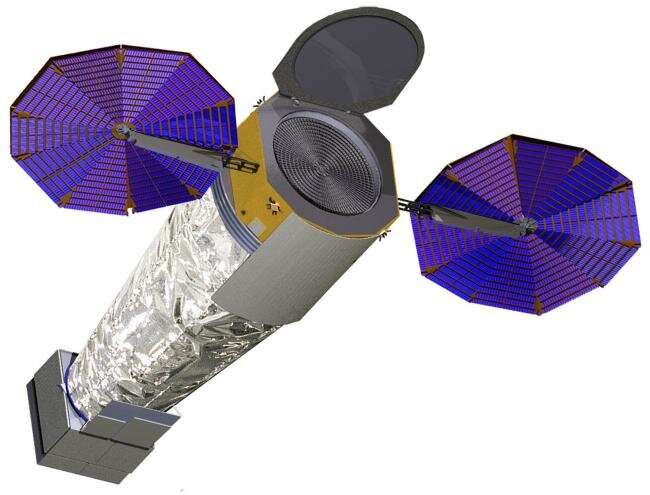
The 2020 Decadal Survey for Astronomy and Astrophysics has recommended a new series of three Great Observatories—or space-based telescopes—as a top national priority for the future of space astrophysics.
The Lynx X-Ray Observatory is included as part of this vision. Dozens of scientists and engineers at the Center for Astrophysics | Harvard & Smithsonian teamed with colleagues around the world to define the observatory's scientific objectives, conceptualize its design and work on key technologies.
Known as the Decadal Survey, the report evaluates astrophysics and astronomy programs and prioritizes them for the next decade of transformative science. Findings from the survey are submitted as recommendations to NASA, the National Science Foundation and the Department of Energy to guide funding requests and allocations for astrophysics over the next 10 years.
"I am pleased to hear that the scientific community endorses a vision for the New Great Observatories that includes Lynx," says Charles Alcock, director of the Center for Astrophysics (CfA). "Lynx will transform our understanding of the cosmos by providing by far the most sensitive X-ray vision into the otherwise invisible universe.
An object is now orbiting alongside China’s Shijian-21 debris mitigation satellite
Friday, 05 November 2021 12:42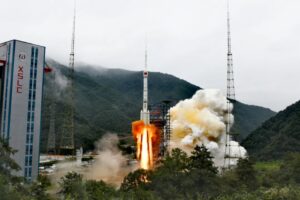
U.S. space tracking has detected a new object for unknown purposes orbiting along with China’s recently launched Shijian-21 space debris mitigation technology satellite.
Image: Mind the stars
Friday, 05 November 2021 11:43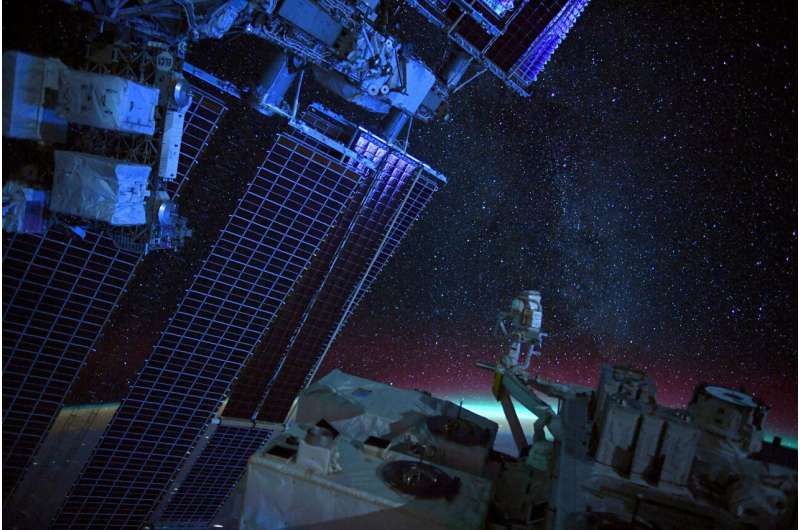
Space can be a cruel mistress, but she is a beautiful one.
As we await the launch of ESA astronaut Matthias Maurer and the return of Thomas Pesquet, let us marvel at the fact that humans live and work in space, an environment so inhospitable to us.
As Thomas nears the end of his six-month mission Alpha on the Space Station, he took this image, noting that living on the International Space Station "really feels like flying on a spaceship into the cosmos… or wait… that's what we do."
While astronauts are often pointing their cameras down to Earth, Thomas looked up for this image. "When you let your eyes adapt to the night, you start seeing millions of stars and it's amazing…there's also a lot of beauty in the cosmos itself, it's just harder to see (and to photograph) at first."
Thanks to collective human intelligence and cooperation, the International Space Station has been a reality for over 20 years, hosting astronauts who run experiments and monitor our planet from above. While launches are quite routine these days, delays happen but that's the space business.
Development of the demonstration satellite HIBARI with variable shape attitude control
Friday, 05 November 2021 11:41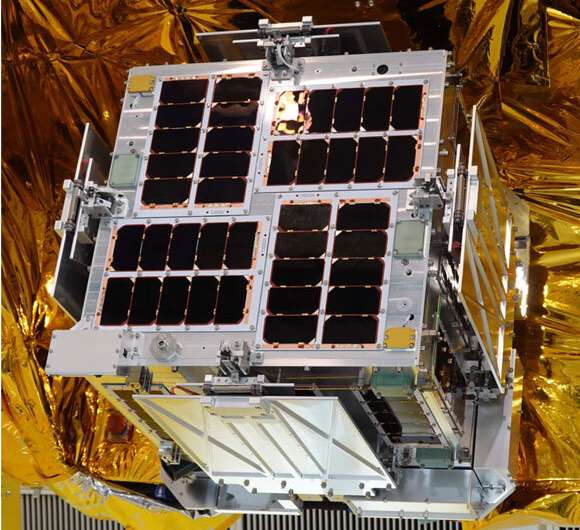
A research team led by Professor Saburo Matunaga of the Department of Mechanical Engineering, School of Engineering, Tokyo Institute of Technology (Tokyo Tech), developed a 50-kg-class technology demonstration microsatellite called HIBARI that denotes "skylark" in English. The purpose of this satellite is the on-orbit demonstration of Variable Shape Attitude Control (VSAC) technology where attitude and orbit are controlled using a variable structure, and the satellite adjusts the attitude via the recoil from the movement of the four movable solar cell paddles. By deploying and retracting the paddles, atmospheric drag can be adjusted and used for orbit control.
HIBARI was selected as a demonstration theme for Japan Aerospace Exploration Agency (JAXA)'s Innovative Satellite Technology Demonstration (ISTD), and it will be launched on Epsilon-5 sometime after November 2021 from the Uchinoura Space Center. The satellite will be launched into a sun-synchronous orbit at 9:30 Local Sun time at Descending Node with a perigee altitude of 547 km and apogee altitude of 565 km for demonstrating VSAC technology in space.
iRocket And Turion Space ink agreement for 10 launches to low earth orbit
Friday, 05 November 2021 11:01 On November 4, 2021, iRocket announced that the company signed an agreement with Turion Space Corp in Irvine, CA. Said iRocket CEO Asad Malik, "We are excited about this new partnership with Turion Space to provide rapid access to space and cost competitive launch costs for their 20 Droid satellites and the low-cost final orbit delivery option their Droid satellites will bring to some of our own
On November 4, 2021, iRocket announced that the company signed an agreement with Turion Space Corp in Irvine, CA. Said iRocket CEO Asad Malik, "We are excited about this new partnership with Turion Space to provide rapid access to space and cost competitive launch costs for their 20 Droid satellites and the low-cost final orbit delivery option their Droid satellites will bring to some of our own Judge tosses Blue Origin's lawsuit over SpaceX lunar contract
Friday, 05 November 2021 11:01 A federal judge on Thursday threw out Blue Origin's latest legal attempt to block SpaceX's $2.9 billion lunar lander contract from NASA.
"The defendant's motion to dismiss ... is granted," Federal Claims Court judge Richard Hertling wrote in an order, citing a sealed opinion that he also signed.
Blue Origin, Jeff Bezos' rocket company, had sued Elon Musk's SpaceX and the U.S. gov
A federal judge on Thursday threw out Blue Origin's latest legal attempt to block SpaceX's $2.9 billion lunar lander contract from NASA.
"The defendant's motion to dismiss ... is granted," Federal Claims Court judge Richard Hertling wrote in an order, citing a sealed opinion that he also signed.
Blue Origin, Jeff Bezos' rocket company, had sued Elon Musk's SpaceX and the U.S. gov BT secures industry first Global Partnership with OneWeb
Friday, 05 November 2021 11:01 BT and OneWeb have agreed terms for a new Distribution Partner Agreement, with OneWeb to provide low Earth orbit (LEO) satellite communication services across BT Group.* This builds on an initial Memorandum of Understanding signed in July and means BT is testing how LEO satellite technology integrates with its existing terrestrial capabilities to meet the communications needs of customers. On su
BT and OneWeb have agreed terms for a new Distribution Partner Agreement, with OneWeb to provide low Earth orbit (LEO) satellite communication services across BT Group.* This builds on an initial Memorandum of Understanding signed in July and means BT is testing how LEO satellite technology integrates with its existing terrestrial capabilities to meet the communications needs of customers. On su CADRE of Mini Rovers Navigate Simulated Lunar Terrain
Friday, 05 November 2021 11:01 A team of shoebox-sized rover scouts was recently put to the test at a NASA Glenn Research Center lab. The facility, called the Simulated Lunar Operations lab (or SLOPE) is designed to mimic lunar and planetary surface operations. The mini rovers traversed simulated lunar soil - called regolith - to better understand the types of challenges that lunar rovers of this size will face on the Moon's
A team of shoebox-sized rover scouts was recently put to the test at a NASA Glenn Research Center lab. The facility, called the Simulated Lunar Operations lab (or SLOPE) is designed to mimic lunar and planetary surface operations. The mini rovers traversed simulated lunar soil - called regolith - to better understand the types of challenges that lunar rovers of this size will face on the Moon's American Astronomical Society Supports Astro2020 Decadal Survey
Friday, 05 November 2021 11:01 The American Astronomical Society (AAS), a major international organization of professional astronomers, astronomy educators, and amateur astronomers, supports the decadal survey report identifying scientific and foundational priorities, opportunities, and funding recommendations for astronomy and astrophysics in the coming decade and beyond. The report of the Astro2020 steering committee, sever
The American Astronomical Society (AAS), a major international organization of professional astronomers, astronomy educators, and amateur astronomers, supports the decadal survey report identifying scientific and foundational priorities, opportunities, and funding recommendations for astronomy and astrophysics in the coming decade and beyond. The report of the Astro2020 steering committee, sever NASA could return astronauts on space station before replacements arrive
Friday, 05 November 2021 11:01 Four astronauts could leave the International Space Station on Sunday without their replacement team having arrived to take over, NASA announced Thursday, but the timing remains uncertain due to weather conditions.
The four members of the Crew-2 mission, including a French and a Japanese astronaut, are due to return to Earth this month after spending about six months on board the ISS.
N
Four astronauts could leave the International Space Station on Sunday without their replacement team having arrived to take over, NASA announced Thursday, but the timing remains uncertain due to weather conditions.
The four members of the Crew-2 mission, including a French and a Japanese astronaut, are due to return to Earth this month after spending about six months on board the ISS.
N NASA, SpaceX Reviewing Commercial Crew Rotation Plans
Friday, 05 November 2021 11:01 NASA and SpaceX continue to review launch and return opportunities for the upcoming crew rotation flights to and from the International Space Station as part of the agency's Commercial Crew Program.
Mission teams now are considering whether to return the agency's SpaceX Crew-2 mission from the space station ahead of launching the next crew rotation due to the associated weather considerati
NASA and SpaceX continue to review launch and return opportunities for the upcoming crew rotation flights to and from the International Space Station as part of the agency's Commercial Crew Program.
Mission teams now are considering whether to return the agency's SpaceX Crew-2 mission from the space station ahead of launching the next crew rotation due to the associated weather considerati SIRIUS-21 to simulate flight to Moon starts in Moscow
Friday, 05 November 2021 11:01 International isolation experiment SIRIUS-21 to simulate the flight and landing on the moon started on Thursday in Moscow, a Sputnik correspondent reported from the Institute of Biomedical Problems (IBMP) of the Russian Academy of Sciences.
Six people went on a conditional trip to the moon: Oleg Blinov, an instructor of the Cosmonaut Training Center; Viktoria Kirichenko, a surgeon at the I
International isolation experiment SIRIUS-21 to simulate the flight and landing on the moon started on Thursday in Moscow, a Sputnik correspondent reported from the Institute of Biomedical Problems (IBMP) of the Russian Academy of Sciences.
Six people went on a conditional trip to the moon: Oleg Blinov, an instructor of the Cosmonaut Training Center; Viktoria Kirichenko, a surgeon at the I NASA Statement on Artemis Lunar Lander Court Decision
Friday, 05 November 2021 11:01 NASA was notified Thursday that the U.S. Court of Federal Claims denied Blue Origin's bid protest, upholding NASA's selection of SpaceX to develop and demonstrate a modern human lunar lander. NASA will resume work with SpaceX under the Option A contract as soon as possible.
In addition to this contract, NASA continues working with multiple American companies to bolster competition and comm
NASA was notified Thursday that the U.S. Court of Federal Claims denied Blue Origin's bid protest, upholding NASA's selection of SpaceX to develop and demonstrate a modern human lunar lander. NASA will resume work with SpaceX under the Option A contract as soon as possible.
In addition to this contract, NASA continues working with multiple American companies to bolster competition and comm 
